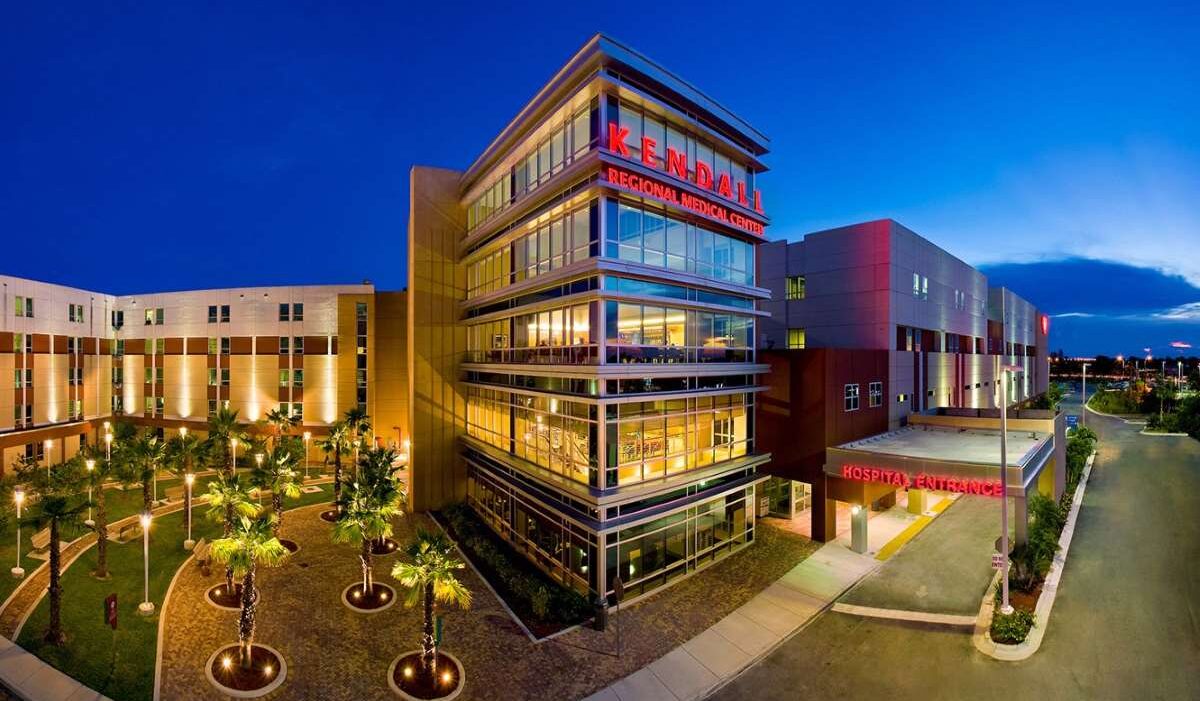Healthcare HVAC Systems: The Latest Technology
The latest HVAC technologies for healthcare facilities are designed to enhance indoor air quality, ensure patient safety, reduce energy consumption, and comply with increasingly stringent regulatory standards. Here’s a breakdown of the most advanced HVAC technologies currently revolutionizing healthcare environments:
Cutting-Edge HVAC Technology for Healthcare Facilities
1. Ultraviolet Germicidal Irradiation (UVGI)
- What It Is: UVGI uses ultraviolet (UV-C) light to disinfect air by destroying the DNA and RNA of microorganisms, including bacteria, viruses, and fungi.
- How It Benefits Healthcare Facilities: UVGI systems can be installed in air handling units (AHUs) or ductwork to inactivate pathogens circulating through the HVAC system. This is especially critical in areas requiring high sterility, like operating rooms, intensive care units (ICUs), and isolation wards. By enhancing infection control, UVGI reduces the risk of airborne disease transmission.
- Latest Trends: Modern UVGI systems feature smart controls that adjust the intensity of UV-C light based on airflow and contamination levels, ensuring energy efficiency while maintaining disinfection efficacy.
2. Advanced Filtration Systems
- What It Is: Advanced filtration systems, including High-Efficiency Particulate Air (HEPA) filters and high Minimum Efficiency Reporting Value (MERV) filters, are used to remove particles, contaminants, and pathogens from the air.
- How It Benefits Healthcare Facilities: HEPA filters can capture up to 99.97% of airborne particles as small as 0.3 microns, including dust, pollen, mold, bacteria, and some viruses. These filters are essential in areas such as operating rooms, patient wards, and laboratories where air purity is critical.
- Latest Trends: Modern filtration systems include electrostatic filters that trap particles using an electric charge, enhancing their efficiency without increasing airflow resistance. Additionally, smart filtration systems equipped with sensors can monitor air quality in real-time and adjust filtration levels accordingly.
3. Energy Recovery Ventilation (ERV) Systems
- What It Is: ERV systems capture the energy from exhaust air and use it to condition incoming fresh air, significantly reducing the HVAC system’s heating and cooling load.
- How It Benefits Healthcare Facilities: Healthcare facilities require constant ventilation to maintain indoor air quality, leading to high energy costs. ERV systems lower energy consumption by recovering up to 70-80% of the energy from exhausted air, thereby improving the facility’s overall energy efficiency without compromising ventilation standards.
- Latest Trends: The latest ERV systems incorporate enthalpy wheels that adjust both temperature and humidity, providing more precise control over indoor conditions. Some systems now feature smart control integration, allowing them to adjust ventilation rates based on real-time occupancy and IAQ data.
4. Variable Air Volume (VAV) Systems with Smart Controls
- What It Is: VAV systems control airflow to different zones in a building based on the specific cooling or heating requirements of each area.
- How It Benefits Healthcare Facilities: In healthcare environments, different zones such as patient rooms, operating theaters, laboratories, and administrative offices have varied temperature, humidity, and ventilation needs. VAV systems provide flexibility by allowing for zone-specific climate control, improving comfort and energy efficiency.
- Latest Trends: Modern VAV systems now include smart controls that utilize occupancy sensors, CO2 detectors, and real-time temperature and humidity monitoring to adjust airflow dynamically. This allows for demand-controlled ventilation (DCV), optimizing air changes based on occupancy levels and reducing energy waste.
5. Building Automation Systems (BAS)
- What It Is: BAS integrates HVAC, lighting, security, and other building systems to enable centralized control, monitoring, and automation.
- How It Benefits Healthcare Facilities: BAS enables healthcare facilities to optimize HVAC performance by automating temperature, humidity, and ventilation controls. It can monitor indoor air quality in real-time, adjust system settings, and alert facility managers to any potential issues, such as filter changes or equipment malfunctions.
- Latest Trends: The latest BAS solutions are IoT-enabled (Internet of Things) and incorporate machine learning algorithms. These systems can analyze historical data to predict and prevent HVAC system failures, further enhancing energy efficiency, occupant comfort, and system reliability.
6. Chilled Beam Systems
- What It Is: Chilled beam systems use water coils to cool or heat air, circulating it naturally without the use of traditional air handlers or fan-powered units.
- How It Benefits Healthcare Facilities: Chilled beams provide radiant cooling that is quieter, more energy-efficient, and reduces the amount of ductwork required. This makes them suitable for patient rooms, administrative areas, and laboratories.
- Latest Trends: Active chilled beams incorporate air supply ducts to enhance air distribution, improving ventilation and comfort control. Newer chilled beam systems can be integrated into BAS for optimized operation, adjusting cooling based on room occupancy and load conditions.
7. High-Efficiency Heat Pumps
- What It Is: Heat pumps provide both heating and cooling by transferring heat between the indoor and outdoor environments.
- How It Benefits Healthcare Facilities: High-efficiency heat pumps offer a versatile solution for year-round climate control in healthcare settings, providing more consistent temperature regulation. These systems are particularly beneficial in transitional spaces like lobbies and waiting areas.
- Latest Trends: Variable refrigerant flow (VRF) heat pumps allow for simultaneous heating and cooling in different zones of the building, enabling healthcare facilities to maintain varied temperature settings in different areas efficiently.
8. Thermal Energy Storage Systems
- What It Is: Thermal energy storage systems store excess energy during off-peak hours by cooling water or ice. The stored energy is then used during peak hours to provide cooling.
- How It Benefits Healthcare Facilities: These systems reduce the HVAC system’s peak demand, leading to significant energy cost savings. Hospitals and other healthcare facilities that operate 24/7 benefit from reduced utility costs while maintaining consistent indoor comfort.
- Latest Trends: Ice-based thermal storage has become more efficient with the integration of smart controls that optimize the storage and usage cycles based on real-time energy pricing and building load requirements.
9. Demand-Controlled Ventilation (DCV) Systems
- What It Is: DCV systems use sensors (such as CO2 detectors) to monitor occupancy levels and adjust ventilation rates accordingly.
- How It Benefits Healthcare Facilities: DCV systems ensure adequate ventilation in high-occupancy areas, such as waiting rooms, while reducing unnecessary energy use when spaces are unoccupied. This helps maintain high indoor air quality while optimizing energy consumption.
- Latest Trends: Modern DCV systems integrate with BAS, allowing them to adjust airflow based on multiple parameters, including temperature, humidity, and indoor air pollutant levels, enhancing both comfort and energy efficiency.
10. Airborne Pathogen Detection and Monitoring Systems
- What It Is: These are advanced IAQ monitoring systems equipped with sensors that detect airborne pathogens, particulate matter, VOCs (Volatile Organic Compounds), and other contaminants in real-time.
- How It Benefits Healthcare Facilities: Early detection of airborne pathogens is crucial for infection control in hospitals. These systems alert facility managers to IAQ issues, allowing for immediate intervention, such as increasing ventilation rates or activating UVGI systems.
- Latest Trends: The latest systems use AI and machine learning to analyze data trends and predict potential IAQ issues, enhancing the facility’s ability to maintain a safe and healthy environment for patients and staff.
11. Smart HVAC Equipment and Diagnostics
- What It Is: Smart HVAC equipment, such as chillers, boilers, and air handlers, includes built-in sensors and diagnostics for real-time performance monitoring and remote control.
- How It Benefits Healthcare Facilities: Smart HVAC equipment provides continuous system diagnostics, identifying inefficiencies, potential failures, and maintenance needs before they become critical. This predictive maintenance approach minimizes downtime and maintains optimal HVAC performance.
- Latest Trends: Integration with cloud-based platforms allows facilities to monitor and control HVAC systems remotely, leveraging data analytics to enhance system reliability and operational efficiency.
Why These Technologies Matter for Healthcare Facilities
Implementing these latest HVAC technologies in healthcare settings offers several key benefits:
- Enhanced Infection Control: Improved air quality management and pathogen inactivation technologies (UVGI, HEPA filters) reduce the risk of airborne transmission of infectious diseases.
- Energy Efficiency: Technologies like ERV, VAV systems, and thermal energy storage systems reduce energy consumption, aligning with sustainability goals and lowering operational costs.
- Regulatory Compliance: Advanced monitoring and control systems help maintain compliance with strict indoor air quality and ventilation standards (e.g., ASHRAE 170), ensuring the safety and comfort of patients and staff.
- Operational Reliability: Smart equipment and BAS integration enable proactive maintenance and efficient system management, crucial in 24/7 healthcare environments.
Tropic Mechanical: Nationwide Leader in Design-Build HVAC Solutions for Healthcare Facilities
Tropic Mechanical stands at the forefront of design-build HVAC solutions, particularly in healthcare and institutional projects. Based in South Florida and led by experienced engineers, Tropic Mechanical has garnered a reputation as a trusted contractor for some of the most complex and demanding projects nationwide. Our expertise encompasses the latest HVAC technologies, ensuring that healthcare facilities receive tailored solutions that prioritize patient safety, indoor air quality, energy efficiency, and regulatory compliance.
Featured Projects by Tropic Mechanical
Our portfolio showcases our commitment to excellence, advanced technology, and innovative solutions for healthcare environments. Below are some of our recent projects that reflect our expertise in integrating the latest HVAC technologies:
Jackson Health System – West Campus
- Tropic Mechanical provided state-of-the-art HVAC systems for Jackson Health System’s West Campus, including advanced filtration and airflow management. Our integration of UVGI technology and high-efficiency ventilation solutions ensured the highest standards of indoor air quality and infection control, creating a safe and comfortable environment for patients and staff.
- Learn More
Mayo Clinic Proton Facility
- In this cutting-edge cancer treatment center, Tropic Mechanical delivered a custom HVAC system that prioritized precise temperature and humidity control, vital for the sensitive equipment used in proton therapy. We employed energy-efficient technologies, including Variable Air Volume (VAV) systems and advanced building automation to ensure optimal performance and patient comfort.
- Learn More
UHealth Doral Medical
- Tropic Mechanical designed and installed a comprehensive HVAC system for UHealth Doral Medical, focusing on smart zoning, airflow control, and advanced filtration. Our team utilized Energy Recovery Ventilation (ERV) systems to maintain high indoor air quality while optimizing energy efficiency, aligning with UHealth’s commitment to sustainable healthcare practices.
- Learn More
NCH Surgical Tower
- For the NCH Surgical Tower, we implemented an advanced HVAC design incorporating HEPA filtration, UVGI, and precise climate control systems tailored for operating rooms and surgical suites. Our work ensures a sterile, safe environment for patients while enhancing the energy efficiency of the facility’s HVAC operations.
- Learn More
Mount Sinai Medical Center – Braman Cancer Center
- At the Braman Cancer Center, Tropic Mechanical installed high-efficiency HVAC systems with smart controls for airflow and temperature regulation. By utilizing chilled beam technology, we provided a quiet, energy-efficient cooling solution, improving both patient comfort and air quality in treatment areas.
- Learn More
University of Miami – Frost Institute of Chemistry & Molecular Science
- Tropic Mechanical was instrumental in delivering a specialized HVAC system for this research-intensive facility. Our design included advanced filtration, precise temperature, and humidity control to support the sensitive research environments. We integrated BAS (Building Automation Systems) for real-time monitoring, ensuring a stable, contamination-free atmosphere for the Institute’s critical work.
- Learn More
UHealth Cancer Research Building
- We equipped the UHealth Cancer Research Building with an innovative HVAC system that incorporates the latest in air quality management, including HEPA filtration and demand-controlled ventilation. By prioritizing airflow control and energy efficiency, we created a research environment conducive to groundbreaking medical advancements.
- Learn More
Jackson Health System – ED Expansion & Renovation
- Tropic Mechanical executed an HVAC system expansion and renovation for the emergency department at Jackson Memorial Hospital. Our team focused on infection control by integrating UVGI and enhanced filtration systems. The updated HVAC system includes a flexible design for zoning, ensuring optimal airflow and comfort in various areas of the emergency department.
- Learn More
Request Your Expert HVAC Consultation Today
As a nationwide leader in design-build HVAC solutions, Tropic Mechanical is dedicated to delivering the highest quality systems that prioritize safety, efficiency, and comfort. Our team of expert engineers is ready to design and implement HVAC systems tailored to your healthcare facility’s unique needs.
Ready to enhance your healthcare facility’s HVAC system? Tropic Mechanical can help.
Contact us today to schedule an expert consultation and learn how Tropic Mechanical can provide you with a custom, state-of-the-art HVAC solution.



